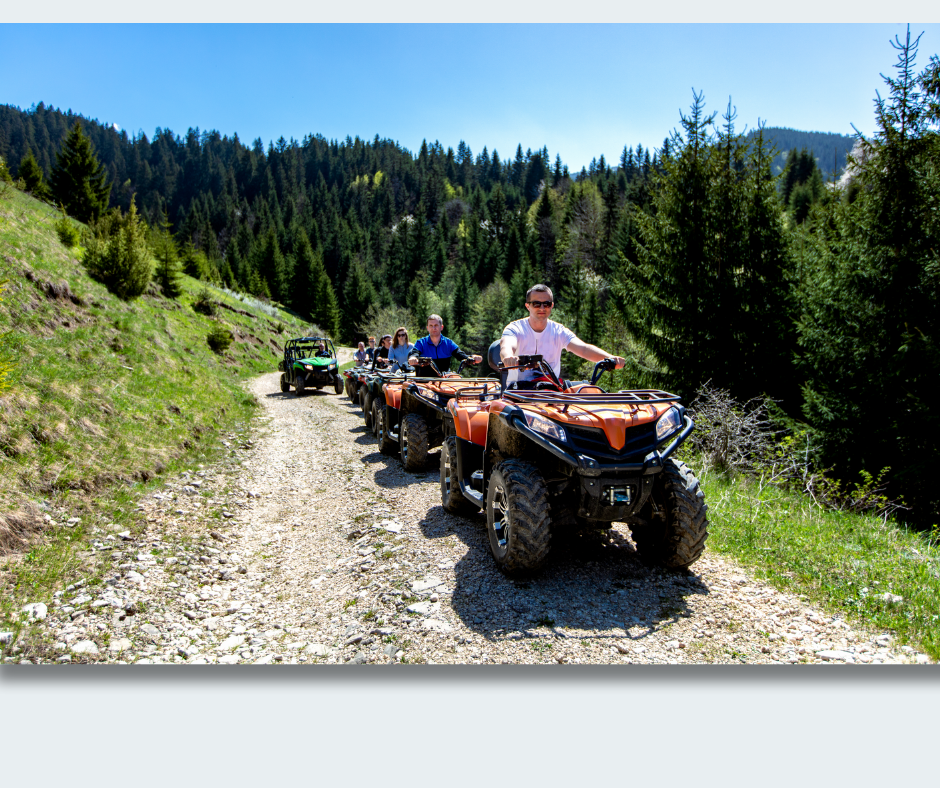The scenic state of Idaho offers ATV enthusiasts a unique opportunity to explore its stunning landscapes and rugged terrains. With a vast network of roadways and trails, the Gem State provides an adventure-packed experience for those operating all-terrain vehicles (ATVs). However, as you prepare to embark on your ATV journey, it’s crucial to understand the importance of insurance and safety measures to ensure a secure and enjoyable ride.
ATV Insurance
Liability Coverage
- When operating an ATV on Idaho roadways, it’s advisable to have liability insurance. This coverage helps protect you financially if you cause an accident that results in injury or property damage to others. It covers medical expenses, legal fees, and property repair costs, safeguarding you from potential lawsuits.
Uninsured/Underinsured Motorist Coverage
- Just as with traditional vehicles, Idaho ATV operators should consider obtaining uninsured/underinsured motorist coverage. This coverage comes into play if you’re involved in an accident with a driver who lacks insurance or whose insurance isn’t sufficient to cover the damages.
Comprehensive and Collision Coverage
- While not required, comprehensive and collision coverage can be beneficial. Comprehensive coverage protects against non-collision incidents like theft, vandalism, or natural disasters. Collision coverage covers the costs of repairing your ATV after a collision, regardless of who’s at fault.
Personal Injury Protection (PIP)
- PIP coverage can help cover medical expenses for you and your passengers in case of an accident, regardless of who’s at fault. It can include medical treatment, rehabilitation, lost wages, and even funeral expenses.
Key ATV traffic laws in Idaho:
When operating an ATV on Idaho roadways, it’s crucial to be aware of the specific laws and regulations governing their use. These laws are designed to ensure the safety of all road users and protect the environment.
- Licensing and Registration
- All ATVs operated on Idaho roadways must be registered with the Idaho Department of Parks and Recreation (IDPR) and display a valid registration sticker.
- If you’re a resident of Idaho and plan to operate your ATV on public roads, you must also have a valid driver’s license or ATV safety education card.
- Age Restrictions
- ATV operators under the age of 16 must complete an ATV safety education course and carry an ATV safety education card while operating on public roads.
- Operators under the age of 14 must be under the direct supervision of a parent, guardian, or a responsible adult while operating an ATV on public roads.
- Helmet Use
- All ATV operators and passengers under the age of 18 are required to wear a DOT-approved helmet while riding on public roads.
- Equipment and Lighting
- ATVs operated on public roads must be equipped with at least one headlamp and one taillight that are illuminated while the ATV is in motion.
- Reflectors and rearview mirrors are also required for safe operation on roadways.
- Speed Limits
- ATVs operated on public roads must adhere to posted speed limits. In the absence of posted limits, the maximum speed is 45 mph.
- When operating within 100 feet of an intersection, reduce your speed to 15 mph.
- Passenger Restrictions
- ATVs are designed for a specific number of passengers. Do not exceed the manufacturer’s designated passenger capacity.
- Passengers must have a secure seat on the ATV and be able to place both feet on the footrests while the ATV is in motion.
- Traffic Rules
- ATV operators are subject to the same traffic laws that apply to other motor vehicles. This includes stopping at stop signs, yielding the right of way, and obeying traffic signals.
- Roadway Use
- ATVs are only permitted to operate on the far right side of the road, as close to the right-hand edge as possible.
- Crossing public roads must be done at a 90-degree angle to the road, and you must yield to oncoming traffic.
- Local Regulations
- While Idaho state law allows for the use of ATVs on certain public roads, local jurisdictions may have additional regulations or restrictions. Always check with local authorities before riding on specific roadways. In Idaho, some highways and roadways are designated as part of the Idaho ATV Highway System, where ATVs are allowed to operate. However, there are rules and restrictions that need to be followed so please check with local authorities.
Remember that laws and regulations can change over time, so it’s essential to verify the most up-to-date information before planning any ATV rides on Idaho highways. You can contact the Idaho Department of Parks and Recreation or see OHV Laws, Rules and Guidelines | Department of Parks and Recreation for up-to-date requirements.


